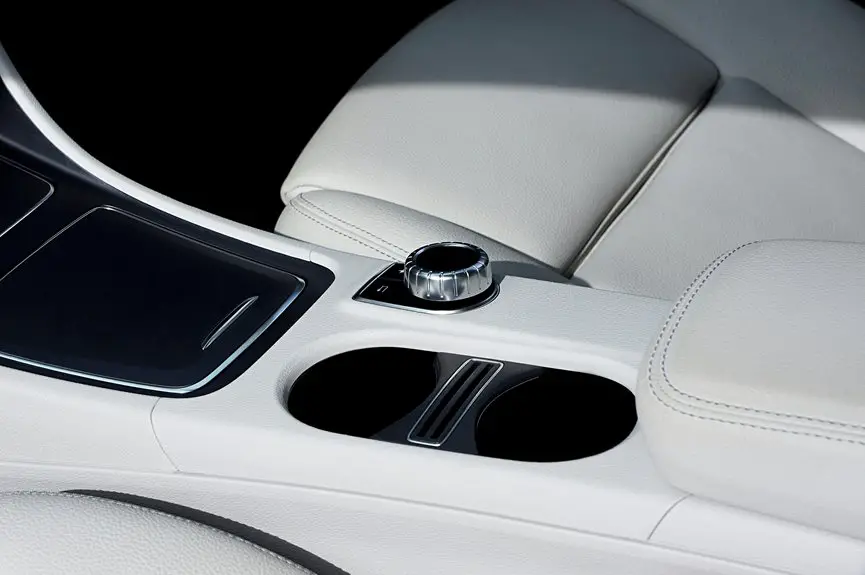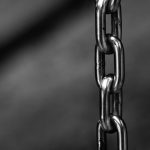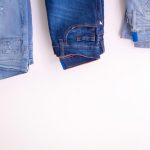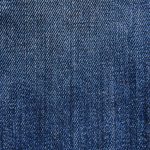For auto upholstery, you’ll want hog rings sized between 7/16 inch and 1/2 inch to securely fasten most seat covers. Smaller 8mm rings work well in tight spaces, while 10mm rings strike a good balance for standard fabrics. Bigger rings like 12mm handle heavier materials or thicker padding. Choosing the right size prevents sagging or damage and guarantees a professional finish. Keep your tools ready, and if you want tips on picking the perfect ring and using them properly, there’s more detailed info to explore.
Table of Contents
Key Takeaways
- Use 7/16-inch to 1/2-inch diameter hog rings for most auto upholstery seat cover installations.
- Choose 10mm hog rings for standard strength and size balance in typical automotive upholstery.
- Select larger hog rings (12mm) for thicker padding or heavier fabrics to prevent bending.
- Smaller hog rings (8mm) work best in tight spaces and on thinner materials to avoid damage.
- Always measure combined material thickness before selecting hog ring size to ensure secure fastening.
Common Hog Ring Sizes for Auto Upholstery
When working on auto upholstery, choosing the right hog ring size is essential for a secure fit. You’ll most commonly use sizes ranging from 1/4 inch to 5/16 inch.
The 1/4-inch rings are great for lighter fabrics and thinner materials, providing a tight hold without damaging the upholstery. If you’re dealing with thicker materials or needing extra strength, 5/16-inch hog rings offer better durability and grip.
Use 1/4-inch rings for light fabrics and 5/16-inch for thicker, tougher upholstery materials.
Sizes like 3/16 inch exist but are less common in automotive work. Using the correct size guarantees the upholstery stays firmly in place and prevents sagging or shifting over time.
Keep these standard sizes in mind, and you’ll have an easier time selecting hog rings that meet your project’s needs precisely.
Factors to Consider When Choosing Hog Ring Size
When choosing a hog ring size, you need to take into account the thickness of the material you’re working with to guarantee a secure fit.
The ring diameter should match the application, allowing the ring to close tightly without damaging the upholstery.
Picking the right size helps you achieve a strong, professional finish every time.
Material Thickness Compatibility
Although hog rings come in various sizes, selecting the right one depends largely on the thickness of the material you’re working with.
If your upholstery fabric or foam is thick, you’ll need a larger, stronger hog ring that can securely clasp without bending or breaking. Conversely, thinner materials require smaller rings to avoid crushing or damaging them.
Using a ring that’s too large for thin material can cause loose fastening, while one too small for thick material won’t close properly. Measure your material’s combined thickness accurately before choosing a hog ring size.
This guarantees your rings hold the layers firmly together, maintaining the upholstery’s shape and durability. Paying close attention to material thickness compatibility helps you achieve a professional, long-lasting finish.
Ring Diameter Selection
Choosing the right ring diameter is essential for ensuring your hog rings fit snugly and hold materials securely. You want a ring diameter that matches the thickness and type of material you’re working with.
Too small, and the ring won’t close properly; too large, and it won’t grip tightly, risking loosening over time. Consider the layers of fabric, foam, or springs you’re fastening. Measure the combined thickness and select a ring diameter slightly larger to accommodate the bundle without excess slack.
Also, think about the tool you’ll use—some pliers work better with specific ring sizes. By matching the ring diameter to your project’s needs, you’ll achieve a durable, professional upholstery job every time.
Hog Rings for Seat Cover Installation
When installing seat covers, you’ll want to pick hog rings that fit the job, usually between 7/16 and 1/2 inch in diameter.
Choosing the right ring size guarantees a secure hold without damaging the material.
Using the proper tools and technique will make the process smoother and your upholstery last longer.
Common Hog Ring Sizes
Several hog ring sizes work well for seat cover installation, each designed to fit specific upholstery needs. You’ll most commonly find sizes ranging from 8 to 12 millimeters in diameter.
The 8mm rings are ideal when you need a smaller, more discreet clamp, perfect for tight spaces or thinner materials. The 10mm size offers a good balance, providing enough strength for most seat covers without being too bulky.
Meanwhile, 12mm rings suit heavier fabrics or thicker padding, giving you a secure grip with extra durability. When working on standard auto upholstery, 10mm hog rings tend to be the go-to choice because they combine ease of use with reliable hold.
Keep these common sizes in mind as you prepare for your project to guarantee a smooth installation.
Choosing Proper Ring Diameter
Although selecting the right hog ring diameter might seem straightforward, it plays an essential role in guaranteeing your seat cover fits securely and lasts longer.
You want a diameter that’s large enough to grip the fabric and frame without causing damage or slipping loose. Rings that are too small can strain and tear the material, while oversized rings won’t hold the cover tightly.
Most auto upholstery projects work best with hog rings between 7/16 inch and 1/2 inch in diameter.
Consider the thickness of both your seat cover material and the frame or wire you’re attaching to. Choosing the proper diameter guarantees a snug fit, prevents premature wear, and keeps your restoration looking professional for years.
Installation Tips and Tools
Mastering hog ring installation requires just a few essential tools and techniques to guarantee your seat cover stays firmly in place.
You’ll need a reliable pair of hog ring pliers designed to hold and close rings securely. Before you start, lay out your seat cover and frame to plan where each ring will go—spacing them evenly assures a tight fit.
When placing rings, position the open ends around the fabric and frame, then squeeze the pliers firmly to close the ring without crushing the material.
Work methodically from one side to the other, avoiding rushed movements that could damage the cover or miss alignment. Keep extra rings handy, and don’t hesitate to replace any that bend improperly.
With the right tools and steady hands, your upholstery will look professional and last longer.
Hog Rings for Foam and Padding Attachment
When you attach foam and padding in auto upholstery, hog rings provide a secure and reliable hold that keeps everything in place. You’ll want to choose hog rings that match the thickness of your foam and the density of the padding to avoid sagging or shifting. Smaller rings work best for thin foam, while larger rings are better for dense padding. Using the right size guarantees even pressure and durability during use.
| Foam Thickness | Recommended Hog Ring Size |
|---|---|
| Thin (1/2″) | 1/2″ |
| Medium (1″) | 5/8″ |
| Thick (1.5″) | 3/4″ |
| Extra Thick | 7/8″ |
| Very Dense | 1″ |
Using Hog Rings With Different Upholstery Materials
Since different upholstery materials vary in texture and thickness, using the right hog rings guarantees a strong, lasting hold without damaging the fabric.
For heavy leather or vinyl, you’ll want larger, thicker hog rings that can securely clamp the material without tearing it. Lighter fabrics like cloth or microfiber require smaller, thinner rings to avoid puncturing or stressing the fibers.
When working with foam-backed fabrics, choose rings that can compress the padding slightly without causing deformation.
Always test a ring on a scrap piece first to see how it interacts with your upholstery material.
Selecting the appropriate hog ring size assures your work stays neat and durable, maintaining the integrity of your auto upholstery over time.
Tools Needed for Installing Hog Rings
Although hog rings themselves are simple, installing them properly requires the right tools to guarantee a secure and professional finish.
First, you’ll need a pair of hog ring pliers, which are specially designed to hold and close rings tightly around the fabric and frame. Make sure your pliers match the size of the hog rings you’re using.
Next, you might want gloves to protect your hands from pinches or sharp edges. A sturdy pair of scissors or fabric shears will help you trim excess material neatly before securing the rings.
Finally, having a flat-head screwdriver or small pry tool can assist in positioning upholstery and ensuring tight fits before clamping the rings.
Using these tools correctly makes your upholstery job cleaner and more durable.
Comparing Hog Ring Sizes: Pros and Cons
Choosing the right hog ring size can make a big difference in your auto upholstery project.
Smaller hog rings, like size 8 or 10, offer precise control and a cleaner finish, ideal for delicate fabrics or tight spaces. However, they mightn’t hold heavier materials as securely.
Larger rings, such as size 12 or 14, provide stronger grips and greater durability, perfect for thicker materials or high-stress areas. The downside? They can be bulkier and harder to hide, potentially affecting the upholstery’s appearance.
You’ll want to balance strength and subtlety based on your material and design needs.
Picking the wrong size could lead to loose upholstery or visible hardware, so weigh these pros and cons carefully before you start.
Tips for Securing Hog Rings Properly
When you secure hog rings properly, you guarantee your auto upholstery stays tight and durable over time.
Start by selecting the right pliers for your hog rings—ones that fit comfortably in your hand and align with the ring size.
Position the ring carefully around the fabric and frame, making sure it’s snug but not overly tight to avoid tearing.
Squeeze the pliers steadily and fully to close the ring securely.
Avoid twisting or bending the ring unevenly, as this weakens the hold.
Work methodically along the seam, spacing rings evenly to distribute tension.
Double-check each ring for a firm grip before moving on.
Where to Buy Quality Hog Rings for Auto Upholstery
Securing your hog rings correctly is just one part of achieving a professional auto upholstery finish. To get the best results, you need quality hog rings that hold up over time.
You can find reliable hog rings at specialty auto parts stores, which often carry products designed specifically for upholstery. Online retailers like Amazon and eBay offer a wide selection, allowing you to compare sizes and materials easily.
For bulk purchases or more specialized needs, check out industrial suppliers like Grainger or McMaster-Carr, known for durable hardware.
Always read reviews and verify that the hog rings you choose match your project’s specifications. Investing in quality rings guarantees your upholstery stays secure and looks great long after installation.
Frequently Asked Questions
How Do Hog Rings Differ From Staples in Upholstery?
You’ll find hog rings are stronger and more flexible than staples, gripping fabric securely without tearing. Unlike staples, hog rings clamp around wires or frames, making them ideal for durable upholstery work where lasting hold matters.
Can Hog Rings Be Reused After Removal?
Oh sure, you can totally reuse hog rings after removal—if you enjoy wrestling with bent metal that won’t hold properly. It’s best to grab new ones for a secure, professional upholstery job without frustration.
Are There Safety Concerns When Using Hog Rings?
Yes, you should be careful when using hog rings. They can snap or cause injury if handled improperly. Always wear gloves and eye protection, and make sure you use the right tools to avoid accidents during installation.
What Is the History of Hog Rings in Upholstery?
You’re stepping into a timeless craft where hog rings quietly tied together furniture and car seats since the early 1900s, blending durability with charm. They’ve gracefully held materials, shaping comfort through generations of upholstery artistry.
How to Remove Hog Rings Without Damaging Fabric?
You can remove hog rings by using pliers or hog ring cutters carefully. Don’t rush; gently pry open the ring to avoid tearing the fabric. Work slowly to protect both the material and upholstery frame.
- The Use of Nonwovens in Construction and Civil Engineering - July 11, 2025
- The Use of Nonwovens in Construction and Civil Engineering - July 11, 2025
- The Use of Nonwovens in Construction and Civil Engineering - July 11, 2025







